15 Fascinating Facts About Space Exploration
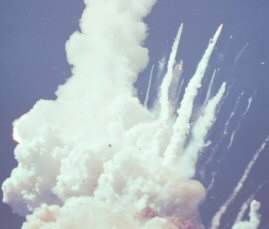 To
understand the concept of space exploration, you need to remember that its
engineers are playing a lengthy end-game. Most of the people involved in its
formation understand that they will not live to see the fruits of their labor.
And yet, they push onward. The only way to get humanity off the ground and into
space is through the help of generations of scientists in every discipline,
working together to learn everything they can about the universe. It's a
sobering thought. Exploration requires visionaries to see things beyond what's
right in front of them. It also requires a lot of funding, which can both
enhance and curtail the ideals of the scientists receiving the funds. But
exploration is still an exciting field, one that grows by leaps and bounds as
our computers get faster and smaller, and as each new generation learns more
about the universe. The following are the most commonly interesting things about space travel
and exploration. To
understand the concept of space exploration, you need to remember that its
engineers are playing a lengthy end-game. Most of the people involved in its
formation understand that they will not live to see the fruits of their labor.
And yet, they push onward. The only way to get humanity off the ground and into
space is through the help of generations of scientists in every discipline,
working together to learn everything they can about the universe. It's a
sobering thought. Exploration requires visionaries to see things beyond what's
right in front of them. It also requires a lot of funding, which can both
enhance and curtail the ideals of the scientists receiving the funds. But
exploration is still an exciting field, one that grows by leaps and bounds as
our computers get faster and smaller, and as each new generation learns more
about the universe. The following are the most commonly interesting things about space travel
and exploration.
15) Space Flight
Isn't Restricted to Government Funding
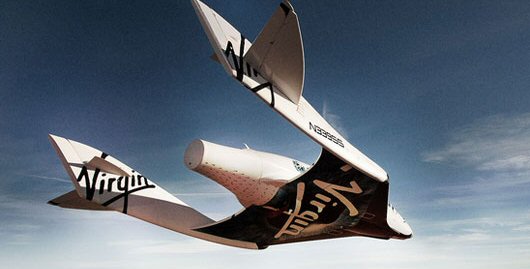
Commercial space flight is one of the most enticing new industries in the world.
With government budgets being slashed left and right, many of the out-of-work
science community are flocking to corporations to continue their work. This can
have both good and bad results. The safety regulations are harder to enforce,
and profit-driven technology often becomes weaponized. But the benefit of a
commercial program is that it doesn't require its developers to manage a web of
bureaucratic red tape just to get funding. Since taxpayers aren't paying for the
program, fewer interests clash over how much money is being spent. Currently,
the Golden Spike company has plans to send a human being to the moon on its
commercial flight. This probably won't happen until 2020 at the earliest, but
it's a giant leap for the space travel industry. Commercial flight means that
the limited budgets of NASA and other government-sponsored programs can be spent
on other research and projects.
Space tourism is another aspect of commercial space flight. They have yet to
breach the outer atmosphere, but there have been flights that rose higher than
any passenger jet can go. Eventually, companies would like to make it a daily
reality for passenger transportation from country to country. The safety issues
still need to be worked out and it's extremely, prohibitively expensive for the
average flier. Still, the idea is out there. One day, you might board a space
flight to take you around the world in a matter of hours or even minutes.
14) The Cold War Caused the Expansion of Space Exploration
 During the second half of the 20th century, the U.S. and the USSR were locked in
a battle of wills. It was a rivalry to end all rivalries, with both sides
competing for the same prizes in every venue. The Space Race came about because
while both countries had rocket programs, it wasn't until the Russians launched
Sputnik that the race really began. The U.S. immediately formed the National
Aeronautics and Space Administration (NASA), which grew out of the National
Advisory Committee for Aeronautics (NACA) in order to combat the Soviet threat.
At the time, no one had a real concept of what lay beyond the Earth's
atmosphere. They wondered what it would be like to walk on the moon or another
planet, a concept that had inspired artists and writers for centuries. NASA
rapidly developed a program to find the best and brightest minds in the world to
build rockets that could carry people into space. Their early efforts to find
people who could pilot the craft brought them to the Air Force and its test
pilots. As a group, test pilots were in great physical shape and most of them
could look even Death in the eye without blinking. In a world where the two
countries continually tried to one-up each other, the space program became a
metaphor for the success and failure of both. The Russians ultimately got the
first craft into orbit, the first man in space, the first woman in space, and
the first spacewalk. America got the first manned spaceflight and of course, the
first man on the moon. Later, however, the two superpowers would meet each other
in orbit during 1975's Apollo-Soyuz Mission, signaling the start of an attempt
to reconcile. During the second half of the 20th century, the U.S. and the USSR were locked in
a battle of wills. It was a rivalry to end all rivalries, with both sides
competing for the same prizes in every venue. The Space Race came about because
while both countries had rocket programs, it wasn't until the Russians launched
Sputnik that the race really began. The U.S. immediately formed the National
Aeronautics and Space Administration (NASA), which grew out of the National
Advisory Committee for Aeronautics (NACA) in order to combat the Soviet threat.
At the time, no one had a real concept of what lay beyond the Earth's
atmosphere. They wondered what it would be like to walk on the moon or another
planet, a concept that had inspired artists and writers for centuries. NASA
rapidly developed a program to find the best and brightest minds in the world to
build rockets that could carry people into space. Their early efforts to find
people who could pilot the craft brought them to the Air Force and its test
pilots. As a group, test pilots were in great physical shape and most of them
could look even Death in the eye without blinking. In a world where the two
countries continually tried to one-up each other, the space program became a
metaphor for the success and failure of both. The Russians ultimately got the
first craft into orbit, the first man in space, the first woman in space, and
the first spacewalk. America got the first manned spaceflight and of course, the
first man on the moon. Later, however, the two superpowers would meet each other
in orbit during 1975's Apollo-Soyuz Mission, signaling the start of an attempt
to reconcile.
Today, Russian cosmonauts and American astronauts often work side-by-side on
the International Space Station. The Cold War is over, and a new partnership has
emerged. When NASA funding was cut in recent years, Russia has played host for
our rockets to be launched into space.
13) The First Woman In Space Was Russian

Americans know the name of Sally K. Ride, who in 1983 became the first American
woman in space. A former tennis champion, at age 32 she was also the youngest
person ever to go into space. Sally Ride was hailed as the American heroine she
truly was, but she couldn't claim the title of first woman in space. That
distinction went to Valentina Vladimirovna Tereshkova, who made it into orbit 20
years before Ms. Ride.
Ms. Tereshkova was also the first civilian in space. She had been selected
from over 400 applicants and made her historic flight in 1963 as part of the
Vostok 6 mission. A former textile worker and amateur parachutist, Ms.
Tereshkova performed experiments on herself to test the effects of space travel
on the female body. She is still admired and revered today, not just in Russia
but also around the world. Sally Ride passed away in 2012 and she, too, is
considered one of the groundbreakers in space travel.
12) Two Mars Rovers Put In Overtime
 Mars Rovers Opportunity & Spirit were sent to the Red Planet's desolate surface
in a twin mission in 2004. Landing a day apart, both rovers were intended to
operate for about four months before they expired. Instead, the two robot craft
kept moving and working, sending back information in a continuous stream.
Spirit's last communication was after it got stuck and couldn't extricate
itself. That final message came in 2010 after six years of exploration.
Opportunity, on the other hand, continued well into 2013. For a while,
Opportunity lost contact and it was believed that the rover had also finally
given up. In late April of 2013, it sent another signal and indicated that it
had undergone a system reboot. Between Opportunity and Curiosity, the rover that
landed in 2011, only the U.S. has successfully made a landing on Mars. The USSR
and the UK have both sent probes but in both cases, but they were destroyed
during landing mishaps. Mars Rovers Opportunity & Spirit were sent to the Red Planet's desolate surface
in a twin mission in 2004. Landing a day apart, both rovers were intended to
operate for about four months before they expired. Instead, the two robot craft
kept moving and working, sending back information in a continuous stream.
Spirit's last communication was after it got stuck and couldn't extricate
itself. That final message came in 2010 after six years of exploration.
Opportunity, on the other hand, continued well into 2013. For a while,
Opportunity lost contact and it was believed that the rover had also finally
given up. In late April of 2013, it sent another signal and indicated that it
had undergone a system reboot. Between Opportunity and Curiosity, the rover that
landed in 2011, only the U.S. has successfully made a landing on Mars. The USSR
and the UK have both sent probes but in both cases, but they were destroyed
during landing mishaps.
11) The Space Shuttle Challenger Didn't Explode In 1986
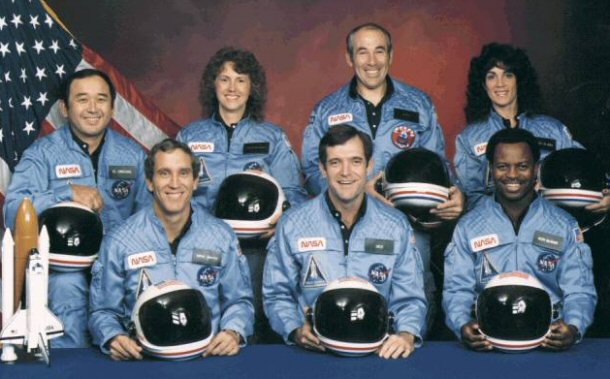
The Space Shuttle Challenger took off with a crew of six astronauts and one
civilian named Christa McAuliffe. This exciting event was broadcast on live TV
and as it took place during the day, many schools showed it to their students.
Ms. McAuliffe's presence on board generated widespread interest due to her
civilian status and the fact that she was, in fact, an ordinary schoolteacher
who got to live the dream of going into space. However, less than a minute and a
half into the launch, something went terribly wrong. The explosion was witnessed
by millions on TV, searing a memory that would never fade into the minds of
children and families everywhere.
Except that the Challenger didn't technically explode. A faulty gasket on one
of the rocket boosters failed. Combined with wind shear and the extreme cold
temperatures of the high altitude, the shuttle was actually torn apart by the
aerodynamic forces. It's believed that the astronauts might have survived this
but were killed upon crashing into the ocean. Thankfully, they were most likely
unconscious due to the altitude and the pressure. After the Challenger tragedy,
a total reexamination of the Space Shuttles and the program occurred. It was a
sobering moment in space exploration history, a reminder that one small thing is
all that needs to go wrong.
10) Asteroid Mining Could Become the Next Big Thing
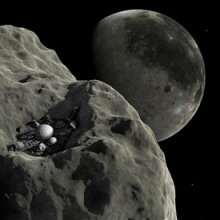 President Obama addressed Kennedy Space Center with a new mission: to retrieve
an asteroid, bring it back to the Earth, and to put it into orbit around the
Earth. From there, a team of geologists, biologists, and other scientists will
study the giant rock for clues about the solar system and how it was formed. The
spacecraft designed to aid in this venture is called Orion. It's possible that
Orion will be ready to launch as soon as 2021. The program met with intense
approval from NASA; within just three years, the craft has been built. Its first
flight test is scheduled for 2014 to test the heat shielding, with official
tests in 2017. Orion's purpose will be to carry astronauts to the orbiting
asteroid so they may take their samples and return safely. President Obama addressed Kennedy Space Center with a new mission: to retrieve
an asteroid, bring it back to the Earth, and to put it into orbit around the
Earth. From there, a team of geologists, biologists, and other scientists will
study the giant rock for clues about the solar system and how it was formed. The
spacecraft designed to aid in this venture is called Orion. It's possible that
Orion will be ready to launch as soon as 2021. The program met with intense
approval from NASA; within just three years, the craft has been built. Its first
flight test is scheduled for 2014 to test the heat shielding, with official
tests in 2017. Orion's purpose will be to carry astronauts to the orbiting
asteroid so they may take their samples and return safely.
Asteroid mining is big business. The giant rocks contain minerals in
quantities that we can only imagine here on Earth. There are organizations
forming now in order to capitalize on the opportunity to gain both knowledge and
profit from it. An asteroid can tell us a lot about other planets and the
understanding of how to live and work in space.
9) Mars Is the Next Target for Exploration

Due to its proximity to Earth and its similar size and gravity, Mars is the next
big target now that we've walked on the moon more than once. Missions to Mars
would not only test the limits of our current technology, but would also teach
us about life on other planets. Eventually, we might be able to reach other
solar systems.
The success of the Mars Rover missions has given us vast amounts of data
about the planet's surface and its mineral and chemical makeup. It's answered
questions such as the stability of the surface and the mineral makeup of the
ground. There have been new questions, too, about strange pieces of what appear
to be metal. The channels that have been seen for hundreds of years on the
planet's surface also still have no concrete solution as to what they are. It's
now assumed that they are less regular than they appear from a distance and
might in fact represent cracking and erosion.
Mars Rover Curiosity sent back some incredible evidence of possible life on
Mars. Only trace amounts of elements were found, but in the field of science and
space exploration, trace amounts speak volumes about the possibilities of the
past. Of all the planets in our solar system, Mars is the most likely to
actually support life.
8) A Colony On Mars Could Happen In Our Lifetime
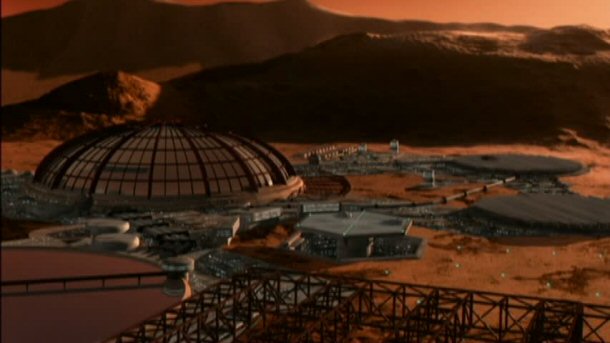
All of this study of Mars is preliminary preparation for an eventual mission to
send a human team there. The catch is that anyone who goes to Mars might not be
able to return to Earth. According to NASA, it takes a minimum of 8 months to
reach the planet using current rocket technology, with the astronauts remaining
either a few weeks or over two years, depending on the alignment of our planets
and other environmental factors. If a certain window isn't met, the astronaut
would be stuck on Mars with no way to get home for another long period of time.
Nevertheless, a plan to send a human to Mars is underway. NASA's current goal
is to have a landing on a near-Earth asteroid by 2025, and Mars after that. In
the meantime, technology is in development to create habitats for future
colonists as well as explorers and scientists. 3D printing is being considered
to help in the construction of these structures. By utilizing the environment
itself, a 3D printer could be solar-powered and could mean fewer materials need
to be shipped to the planet. Once there, the astronauts would set up the printer
and create their shelter structures. The technology is already in use on Earth
today. Homes are being built with minimal effort and nearly no waste at all.
This could become incredibly useful on a Mars colony.
7) Voyager 2 Is Entering Interstellar Space
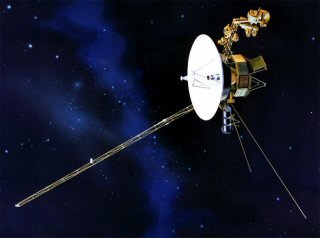 The Voyager program saw the beginning of its success with the launch of Voyagers
1 and 2 in 1977. The two craft were sent on a mulch-faceted mission into deep
space. While the intent was ultimately to serve as a kind of "message in a
bottle" to the universe, as the Voyagers arced through space we've used them to
study planets and moons along the way. What we've learned since then has helped
to shape our understanding of the solar system and our galactic neighborhood.
After nearly 40 years, Voyager 2 has just reached the edge of our solar system
and is about to step off the brink into the deep end of the pool. No one knows
what it will find, but there are hopes that the craft will encounter intelligent
life somewhere beyond our reach. The two spacecraft each carry a golden
phonograph record that contains information about Earth and its people. On the
outside of the crafts are images of humans and instructions about how to play
the phonographs. The Voyager program saw the beginning of its success with the launch of Voyagers
1 and 2 in 1977. The two craft were sent on a mulch-faceted mission into deep
space. While the intent was ultimately to serve as a kind of "message in a
bottle" to the universe, as the Voyagers arced through space we've used them to
study planets and moons along the way. What we've learned since then has helped
to shape our understanding of the solar system and our galactic neighborhood.
After nearly 40 years, Voyager 2 has just reached the edge of our solar system
and is about to step off the brink into the deep end of the pool. No one knows
what it will find, but there are hopes that the craft will encounter intelligent
life somewhere beyond our reach. The two spacecraft each carry a golden
phonograph record that contains information about Earth and its people. On the
outside of the crafts are images of humans and instructions about how to play
the phonographs.
6) Extraterrestrial Life May Not Be What You Expect
 The aliens we see in
movies are romanticized and sensationalized. We portray them as monsters or
simply people with funny noses and British accents. However, according to
astrophysicist Neil DeGrasse Tyson, aliens will most likely be something far
beyond anything we could have imagined. His theory is that even assuming they
take a form that we can relate to, the difference between our intelligence might
be as great as that between a human and an ape. But just as our world formed the
development of the human race, a world with a different primary element might
have gone in a whole other direction. Imagine what life might develop in an
anaerobic environment, or how gravity might change a race's bone structure.
Artists' concepts of other possible races include whale-like beings that "swim"
through the atmosphere of a gas giant. The possibilities are truly endless. The
only thing that most theorists agree upon is that they will not resemble humans
in any way, and they will most certainly not have British accents. The aliens we see in
movies are romanticized and sensationalized. We portray them as monsters or
simply people with funny noses and British accents. However, according to
astrophysicist Neil DeGrasse Tyson, aliens will most likely be something far
beyond anything we could have imagined. His theory is that even assuming they
take a form that we can relate to, the difference between our intelligence might
be as great as that between a human and an ape. But just as our world formed the
development of the human race, a world with a different primary element might
have gone in a whole other direction. Imagine what life might develop in an
anaerobic environment, or how gravity might change a race's bone structure.
Artists' concepts of other possible races include whale-like beings that "swim"
through the atmosphere of a gas giant. The possibilities are truly endless. The
only thing that most theorists agree upon is that they will not resemble humans
in any way, and they will most certainly not have British accents.
5) Learning About Saturn's Moon Titan Right Now
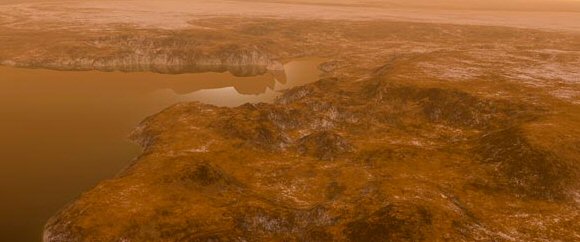
The current Cassini mission to Saturn, Jupiter, and those planets' moons has revealed more
about the two gas giants than we've ever known before. Due to their structure,
it's long been considered impossible to explore them fully. However, new
information might prove our earlier assumptions way off base. One probe landed
on Titan, believing that it was a gas cloud itself. Instead, images came back
from the moon's quite solid surface and revealed an almost beach-like landscape.
However, instead of water, the seas on Titan are made up of liquid methane.
Titan is now believed to be the only body in the solar system to contain stable
bodies of liquid aside from Earth. The methane appears to be part of a cycle
similar to that of our own ocean. The methane evaporates, forms clouds, and rains
back down into the sea.
The Cassini mission has raised questions about the structure of Saturn and
Jupiter. It's possible that what we believe to be purely gas might instead have
a firm underlying structure. The methane seas of Titan bring further
possibilities of future exploration into focus.
It is believed that the methane seas are actually diminishing over time.
Though ten million years is a long time to a human being, in geological terms
it's not very long at all. Cassini's data shows that the methane cycle is
changing into hydrocarbon ethane, a similar gas. If the cycle continues,
eventually the methane will disappear to be replaced by the ethane. This gives
scientists clues into how worlds might evolve over millions of years, including
our own. It is possible that the changes could lead to a kind of life forming on
the surface of Titan.
4) There Is No Astronaut Career Path
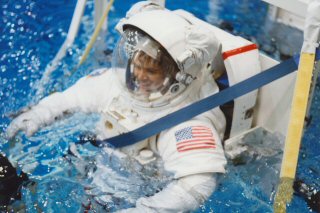 Astronauts are currently chosen on a
one-by-one basis. There's no career path to become an astronaut, as each person
is approached by NASA for specific missions. However, that doesn't mean you
shouldn't pursue a career with NASA. Most astronauts come out of the Air Force
in the form of test pilots. Another way to make yourself an attractive candidate
is to be in peak physical condition and have a strong background in science and
technology. Astronauts need to perform so many different kinds of tasks because
support is so limited in space. If you want to become an astronaut someday, your
best bet is to focus on a science that will be useful in space exploration.
Biology, chemistry, geology, and engineering are commonly looked for in
candidates. In addition to that, however, an astronaut also needs to be
emotionally and mentally stable, easygoing, and calm under pressure. Someone who
falls apart from stress could actually hurt their team, so that ability to stay
cool even in the face of danger is vital. This is topped off by physical
fitness, which serves a practical purpose beyond the fact that space suits can
weigh almost 300lbs. On a spacecraft, every square inch is used. If you're
overweight, you are taking up valuable real estate on the ship. Astronauts are currently chosen on a
one-by-one basis. There's no career path to become an astronaut, as each person
is approached by NASA for specific missions. However, that doesn't mean you
shouldn't pursue a career with NASA. Most astronauts come out of the Air Force
in the form of test pilots. Another way to make yourself an attractive candidate
is to be in peak physical condition and have a strong background in science and
technology. Astronauts need to perform so many different kinds of tasks because
support is so limited in space. If you want to become an astronaut someday, your
best bet is to focus on a science that will be useful in space exploration.
Biology, chemistry, geology, and engineering are commonly looked for in
candidates. In addition to that, however, an astronaut also needs to be
emotionally and mentally stable, easygoing, and calm under pressure. Someone who
falls apart from stress could actually hurt their team, so that ability to stay
cool even in the face of danger is vital. This is topped off by physical
fitness, which serves a practical purpose beyond the fact that space suits can
weigh almost 300lbs. On a spacecraft, every square inch is used. If you're
overweight, you are taking up valuable real estate on the ship.
3) Images You See of Galaxies Are Not Exactly True Color

Taking a photo of a
nearby galaxy is not as simple as pressing the button for a camera shutter. The
process is far more complex and involves much longer exposures. When you see
images of galaxies, they appear vibrant and vivid, full of saturated colors.
However, if you were to see them with your own eyes, they might appear less
bright. This is because human eyes can only capture a limited amount of light.
Telescopes such as the Hubble have the ability to focus on one spot long enough
to collect lots of light, resulting in a more brilliant hue.
If you live in an area where you can see the Milky Way galaxy, you know that
the colors can be quite bright and intense. The proximity to the Milky Way gives
us the ability to process its colors with less difficulty than trying to look
further away. Imagine what they must look like even closer, or living within the
area itself.
2) There Are Hundreds of Planets That Could Be Like Earth
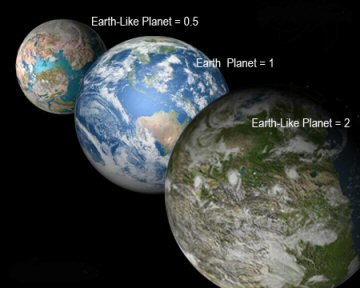 One of the most
fascinating programs today is the Kepler mission, whose purpose is to find and
identify planets that possibly resemble Earth. To date, it's discovered over
2,000 possible planets, 132 confirmed planets, and four planets that lie within
the "habitable zone" of a star. Kepler looks at stars that resemble our own sun,
then tracks the path of bodies that circle the star. Then it looks for objects
that lie within an area where the star's radiation is not too close or too far,
meaning there's a possibility of forming water like our own. Of the planets
discovered so far, the smallest is 40% larger than Earth and the largest is over
70% larger. The best planets will have a rocky formation like Earth's and will
be covered by water like ours. Several artists' renditions of the planets can be
seen on NASA's website. One of the most
fascinating programs today is the Kepler mission, whose purpose is to find and
identify planets that possibly resemble Earth. To date, it's discovered over
2,000 possible planets, 132 confirmed planets, and four planets that lie within
the "habitable zone" of a star. Kepler looks at stars that resemble our own sun,
then tracks the path of bodies that circle the star. Then it looks for objects
that lie within an area where the star's radiation is not too close or too far,
meaning there's a possibility of forming water like our own. Of the planets
discovered so far, the smallest is 40% larger than Earth and the largest is over
70% larger. The best planets will have a rocky formation like Earth's and will
be covered by water like ours. Several artists' renditions of the planets can be
seen on NASA's website.
What this means for us is the possibility of extra-solar travel. These
planets are thousands of light-years away, but one day, we may have the
technology to make that trip. Planets within the habitable zone could support
life in a way that works with our own. They may offer new options for expansion
and colonization in the future. Interestingly, Kepler is named for the
astronomer Johannes Kepler, who wrote of his dreams of "Lemuria," the fabled
land that he imagined on the moon. Lemuria, he wrote, was populated by fantastic
animals and plants that had never been seen on Earth. His dreams drove him to
study the heavens and to hope that one day man might set foot on another world.
Today, it's fitting that the equipment that searches for Earth-like planets
bears his name.
1) Pluto is Not a Planet
 This is one of the most controversial decisions in
the history of the study of the solar system. The downgrade of Pluto from planet
to "plutoid" created an uproar around the world. Unfortunately, the designation
is correct. Pluto is only one of many similar planetoids in the area. While
thousands of people lobbied to restore the planet designation to the solar
system's former smallest planet, the downgrade stuck. However, all was not in
vain:as we were able to make the decision about Pluto's form, so we also learned
far more about the farthest reaches of the system. Voyager's mission brought it
through an area we will never see with our own eyes and answered questions that
have been long held about the edge of our home system. This is one of the most controversial decisions in
the history of the study of the solar system. The downgrade of Pluto from planet
to "plutoid" created an uproar around the world. Unfortunately, the designation
is correct. Pluto is only one of many similar planetoids in the area. While
thousands of people lobbied to restore the planet designation to the solar
system's former smallest planet, the downgrade stuck. However, all was not in
vain:as we were able to make the decision about Pluto's form, so we also learned
far more about the farthest reaches of the system. Voyager's mission brought it
through an area we will never see with our own eyes and answered questions that
have been long held about the edge of our home system.
Final Words
As we learn more about the solar system and its structure, many of our
perceptions will shift and change. Even in the past 50 years we have learned
that the solar system itself is not stationary, but constantly moving across the
galaxy. Who knows what we'll learn in the next 50 years as technology improves.
Perhaps one of the Voyagers will encounter intelligent life. Perhaps the mission
to Mars will achieve success and we'll have the first extra-terrestrial colony.
Asteroid mining could become the next big industry for the world, bringing in
new minerals and a better understanding of how we all came to be here. And
someday, we may even travel to one of Kepler's distant worlds, to make a home
beyond the reach of our own sun.
Space
15 Ways Astronauts Live Differently on the ISS Than on Earth
Top 15 Fascinating Facts About the Moon
15 Fascinating Facts About Space Exploration |